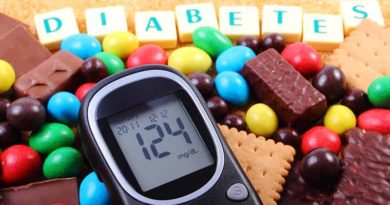Cereals spike blood glucose
On 11th June 2018, during “Diabetes Week”, I tweeted: “T2D prevention plan: Give everyone a Libre blood glucose device for 4 weeks so that they can see what raises their blood glucose. Then advise people to avoid/minimise eating the things that raise their blood glucose” (Ref 1).
Little did I know that, as I was tweeting, a study that had trialled this with 57 people was in the final stages of submission. The paper was called "Glucotypes reveal new patterns of glucose dysregulation" and it was published by Hall et al on July 24th (Ref 2).
The rationale for the paper was sobering: “Type 2 diabetes is one of the most significant health problems worldwide, affecting 30.2 million adults in the US and 422 million worldwide, with global costs in excess of $825 billion.” Almost 1 in 10 US individuals (30 million people) have been diagnosed with diabetes. Another 84 million are estimated to be pre-diabetic and, without intervention, 70% of these may progress to having type 2 diabetes (T2D).
The introduction to the study noted that current methods for measuring 'dysglycemia' (abnormality in blood glucose stability) rely on single-time-point 'finger prick' tests. We now have glucose monitoring devices (like Libre), which can give a continuous assessment of what is happening to blood glucose levels. These are potential game changers for diabetes and potential game changers for food manufacturers. Once people realise that 'healthy whole grains' cause blood glucose spikes, behaviour is more likely to change. The fake food industry must loathe Libre devices almost as much as they loathe the prospect of further sugar tax legislation.
The media coverage was modest and all articles that I saw took the same angle: “High glucose spikes are common in 'healthy' people” (Ref 3). The UK Times headline was “Blood glucose surges among healthy people” (Ref 4). Australian pharmacy news also ran with “High glucose spikes common in healthy people” (Ref 5).
The fact that blood glucose levels were found to spike in healthy individuals was one of the key findings, but there were others. One of them was just how individualised glucose response is to a meal. The authors referenced a study by Zeevi et al, which showed that the post meal glucose response to identical foods varied across individuals (Ref 6). Hall et al described this finding as important given that the American Diabetes Association (ADA) dietary recommendations are general and not individualised. The same applies in the UK, although the National Institute for Care and Health Excellence (NICE) guidelines do allow for an individualised approach (Ref 7).
The study
The rest of this article is available to site subscribers, who get access to all articles plus a weekly newsletter.
To continue reading, please login below or sign up for a subscription. Thank you.




